
Enhanced tanzanite inclusions showcase its unique beauty and rarity.
The value and pricing of tanzanite are influenced by several key factors, including color, clarity, cut, carat weight, and certification. Understanding these factors can help you make an informed decision when purchasing tanzanite. Tanzanite’s color ranges from blue to violet. The most valuable stones exhibit a deep, vivid blue or a rich violet-blue hue. High color saturation increases the stone’s value. Pale or washed-out colors are less desirable and therefore less valuable. Tanzanite’s ability to show different colors from different angles (blue, violet, burgundy) can enhance its appeal and value.
Tanzanite with fewer visible inclusions is more valuable. Eye-clean stones (those without visible inclusions to the naked eye) are highly prized. The clearer the stone, the more it is valued. Cloudy or heavily included stones are less desirable. A well-cut tanzanite will maximize the stone’s color and brilliance. Poorly cut stones can appear dull and lifeless, reducing their value. While the shape (round, oval, cushion, etc.) is a matter of personal preference, some cuts may enhance the stone's color better than others.
Larger tanzanite stones (measured in carats) are generally more valuable, especially if they maintain good color and clarity. However, value per carat can increase disproportionately for larger stones. The gemstone’s value can increase significantly as the size increases, but this is also dependent on the quality of the stone. Certificates from reputable gemological laboratories (such as GIA, AGS) provide assurance of the stone’s authenticity and quality. Certified stones often have higher market value due to the documented verification of their attributes.
A true tanzanite stone can be flawless or it can be heavily inclusion-bearing. Its quality, value, and price are deeply influenced by its degree of clarity. Therefore, it is important to understand the different terms used in the industry and what you might find in tanzanite. See image of enhanced tanzanite inclusions. In general, the larger the tanzanite crystal in the same quality, the rarer it is. This is because the larger crystals took longer to grow, and given that tanzanite can take over 500 million years to form. Carat weight becomes important in quality pieces. An exceptional 3-carat investment-grade color with high clarity is always much rarer and more valuable than a 10-carat B-grade color with inclusions.
While real, natural tanzanite is actually rarer than diamonds, it costs much less. If you consider that a good 5 carat diamond can cost anywhere from $95,000 per carat in the market, center, site, store, and gallery of natural tanzanite while a very good 5 carat tanzanite It will be in the $780-$1,300 range (depending on where you buy), giving you a good idea of the disparity. Tanzanite is very sensitive to thermal shock and also very fragile, so you must be very careful in its maintenance. If your gem needs to be washed, you can wash it with soap and water (neither cold nor warm - the same temperature as the environment). and then dry it.
Market demand heavily influences tanzanite prices. Trends in jewelry and gemstone markets can cause fluctuations in value. Since tanzanite is mined exclusively in a small area of Tanzania, supply limitations can significantly impact prices. Prices in retail jewelry stores often include significant markups over wholesale prices due to factors like branding, craftsmanship, and overhead costs. Online retailers may offer competitive prices, but it’s crucial to buy from reputable sources to ensure quality and authenticity.
Wholesale prices are generally lower than retail prices and are available to businesses purchasing in bulk. Buying multiple stones or larger quantities can sometimes result in discounted pricing. Prices can range from $200 to $500 per carat, depending on quality. Prices typically range from $400 to $800 per carat, with higher quality stones reaching up to $1,000 per carat. High-quality large stones can range from $1,000 to $2,000 per carat or more, with exceptional stones achieving even higher prices.
-
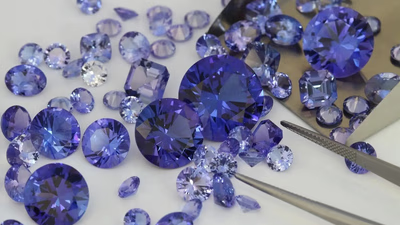
Tanzanite stones are valued for their vibrant blue and violet hues, with high-quality specimens exhibiting strong pleochroism and minimal inclusions. The clarity, cut, carat weight, and certification from reputable gemological laboratories are crucial factors in determining the stone"s value. Authentic tanzanite is exclusively sourced from Tanzania, making verification of origin essential. Larger stones with deep colors are generally more valuable, but quality should not be compromised for size. The gemstone"s hardness ranges from 6 to 7 on the Mohs scale, indicating it may be prone to scratches and damage, which makes it less suitable for everyday wear. Buyers should inspect tanzanite using a jeweler’s loupe to check for clarity and any visible flaws. Comparing multiple stones can help assess color saturation and quality. Genuine tanzanite displays different colors under varying lighting conditions and may exhibit a soft glow under UV light.
Most tanzanite is heat-treated to enhance color; untreated stones are rare and can have different values. A gemological report is essential for confirming authenticity and detailing any treatments the stone has undergone.
-
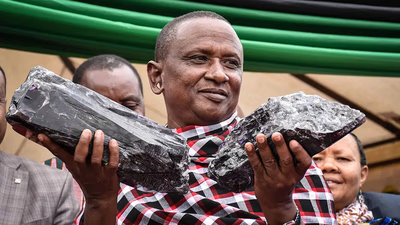
Tanzanite is a unique blue to violet gemstone, a variety of zoisite, discovered in Tanzania"s Mererani Hills. Its striking color can change based on crystal orientation and lighting, a phenomenon known as pleochroism. First found in 1967 by a Maasai tribesman, tanzanite gained popularity through Tiffany & Co. , which named it after its origin. The gemstone"s rarity stems from its exclusive source, making it highly desirable. With a hardness of 6. 5 to 7 on the Mohs scale, tanzanite is somewhat vulnerable to scratches and requires careful handling. Most stones available today are heat-treated to enhance their color, which ranges from brownish to greenish before treatment.
The value of tanzanite is determined by its color, clarity, cut, and carat weight; deep blue or violet stones without inclusions are the most sought after. Despite being relatively new to the market compared to other gemstones, tanzanite"s unique beauty and limited availability contribute to its growing popularity. "
-
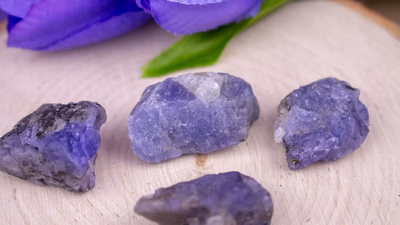
Tanzanite is a unique gemstone known for its captivating blue and violet hues, which can vary based on viewing angles due to its pleochroic nature. The most sought-after color is deep blue, with larger stones exhibiting more intense shades. Violet tanzanite, while also valued, is less popular than the blue variety. Green tanzanite, or "chrome tanzanite," is rarer and less valued compared to its blue and violet counterparts. Untreated tanzanite can show brown or yellow hues but is often heat-treated to enhance its appeal. The gemstone"s origins trace back to Tanzania, where it was first discovered and named by Tiffany & Co. in the 1970s. The market primarily consists of heat-treated stones due to their vibrant colors, while untreated stones are prized by collectors for their rarity.
Cat’s Eye tanzanite features a unique optical effect resembling a cat"s eye and is highly sought after despite its rarity. Bi-color tanzanite displays two distinct colors within the same stone, making it particularly appealing to collectors. Understanding the various types of tanzanite and their market values can help buyers appreciate this remarkable gemstone"s full spectrum. "
-
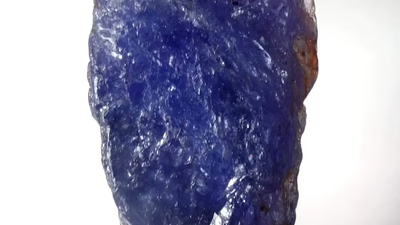
The value of tanzanite is determined by factors such as color, clarity, cut, carat weight, and certification. The most sought-after tanzanite displays a deep blue or violet-blue hue, with high color saturation significantly enhancing its value. Clarity is crucial; eye-clean stones are more valuable than those with visible inclusions. The quality of the cut also affects the stone"s brilliance and overall appeal. Larger tanzanite stones tend to be more valuable, especially if they maintain good color and clarity. Certification from reputable gemological laboratories can increase market value due to verified authenticity. Tanzanite is rarer than diamonds but generally costs much less, with prices ranging from $200 to $2,000 per carat based on quality. Market demand and supply limitations from its exclusive mining location in Tanzania further influence pricing dynamics.
Retail prices often include markups compared to wholesale prices, making it essential for buyers to purchase from reputable sources. "
-
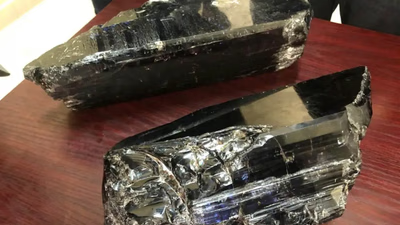
Tanzanite is exclusively found in a small region of northern Tanzania, specifically near the Mererani Hills in the Simanjiro District. This area, approximately 7 kilometers long and 2 kilometers wide, is close to Arusha and Kilimanjaro International Airport, making it relatively accessible. The gemstone"s rarity stems from its limited geographic range, contributing to its high value. As resources diminish due to excessive extraction, prices are expected to rise significantly over the next 20 to 25 years. The Great Rift Valley, which stretches from Syria to Mozambique, plays a crucial role in the geological formation of tanzanite through volcanic activity and tectonic movements. The Tanzanian government has divided mining operations into four blocks, with large operators controlling two blocks while local miners work the others. Mining conditions are challenging due to depth and rock hardness, requiring both artisanal and commercial extraction methods. Tanzanite exhibits strong pleochroism, displaying different colors from various angles, typically blue, violet, and burgundy hues.
Most stones undergo heat treatment to enhance their color. "





